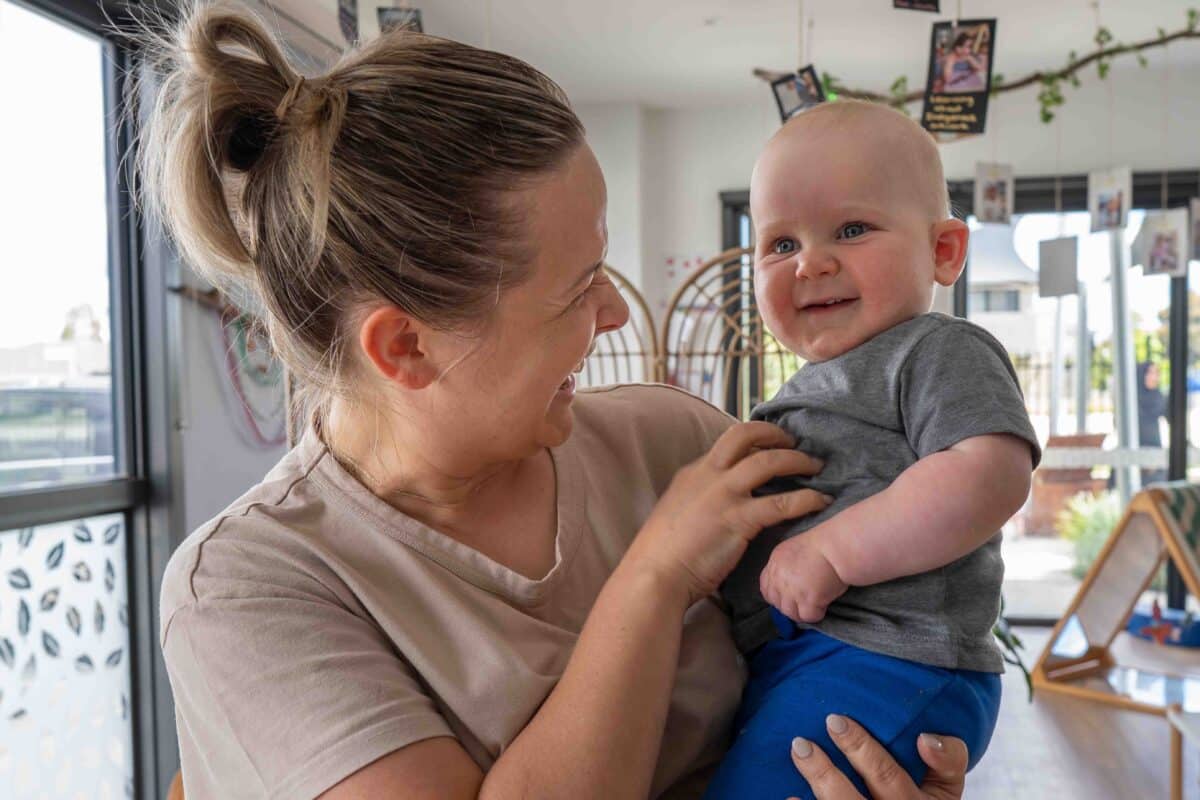Returning to Work After Parental Leave: What to Expect
7 September 2023

Are you dreading that first day back in the office? If so, read on for our full breakdown of how different kinds of leave, medical resources, and simple tips can help you navigate your return to work!
When you’re cosied up on the couch with your new bundle of joy, returning to work is probably the last thing on your mind. Likewise, the period following childbirth or adoption is a mix of emotions, milestones, and precious memories you’ll carry for life.
However, if you’ve made the decision to return to work, the first day will come around before you know it! While you might think you’ll settle back into the rhythm right away, parents often struggle to ease back into the work-life balance.
To make sure you’re ready for that first day back on the job, we’ve broken down parental leave, your entitlements, and some handy tips to keep in mind!
What is Parental Leave?
Unpaid Parental Leave
In Australia, all employees are eligible for unpaid parental leave if they have completed at least 12 months of continuous service with their employer.
This entitlement applies to an employee that gives birth, an employee whose de-facto partner gives birth, or an employee who adopts a child aged under 16.
Eligible employees are entitled to 12 months of unpaid parental leave, with the option to request an extension for a further 12 months.
For information on other types of leave (such as pre-adoption leave), click here.
Australian Government Paid Parental Leave
As of July 1 2023, the Australian Government Paid Parental Leave scheme provides the following additional support to eligible employees:
- A combined 20 weeks government-funded paid leave that is paid at the national minimum wage and shared between you and your de-facto partner. In summary, government funded paid parental leave:
i) can only be claimed at a workplace where you or your partner have worked for at least 12 months.
ii) must be shared, i.e., one partner can’t use more than 90% (18) of the 20 weeks (unless a single parent).
iii) must be used within 12 months of birth by the primary caregiver, while the secondary caregiver can use the leave within 24 months.
iv) doesn’t have to be taken all at once. For example, you could take one day off a week over several months.

Employer Funded Paid Parental Leave
Some employers offer additional paid parental leave to new parents. The amount of leave and pay entitlements are at the discretion of each employer and will be detailed in enterprise agreements or contracts of employment.
Moreover, employer funded parental leave doesn’t affect an employer’s eligibility for the government funded paid parental leave scheme.
Your Rights When Returning to Work
An employee returning from unpaid parental leave is entitled to:
- Return to their old role or one of equal pay and responsibilities upon their return.
- Request flexible working arrangements such as working reduced hours or adjusting start and finish times.
- Support if they’re breastfeeding. For example, your workplace must make reasonable efforts for those expressing breastmilk at work. These include providing a clean and private area (not a toilet), access to a fridge to store the milk, an area to store your manual or electric pump (if you use one), a hand washing station, and regular breaks.
For more information, click here.
Return to Work Tips
To help you mentally prepare for the coming transition, we’ve listed some everyday steps you can take to reduce the dread of that fast-approaching first day back!

1. Keep an Open Mind
If you were working full-time before going on parental leave, don’t assume you’ll slide right back into your old routine like nothing happened. If you feel you need an extra year to care for your child, you can request this with your employer. Likewise, if you have family support or childcare organised and you want to jump back into your career earlier, that’s also okay!
Every child is unique, and their development and dependency differ greatly. Be sure to discuss any questions or concerns with a healthcare professional, and work with them to develop your return-to-work pathway. This may involve returning on a part-time or casual basis or taking on less responsibilities.
2. Organise Childcare in Advance
If you’re enrolling your child into childcare, don’t leave it until the last minute. Most early learning providers have waitlists, as well as orientation and induction processes. Also, you’ll want to give yourself as much time as possible to acclimatise your child into care and find the best fit.
If you’re looking for Reggio Emilia inspired early childhood education to give your child the best start, why not take a tour of one of our Explorers Centres? Explorers offers premium quality early childhood education and care from six weeks to school age!

3. Stay in the Loop!
It’s tempting to shelve any thought of work during parental leave. After all, it’s time off right? However, it’s important to keep tabs on your workplace and stay in touch with colleagues and old work friends, particularly as you near your return date. This doesn’t have to be formal – something as simple as a catchup over coffee goes a long way!
This will help you avoid the culture shock of returning to work and seeing all the new faces or a new direction of the business. Moreover, it will give you valuable information and insights to inform your decision of when, and in what capacity, you’ll return to work.
Additionally, you can request to work up to 10 days while on parental leave through keeping in touch days. These could be for a conference, training days, or just to keep involved in the business. They don’t have to be taken all at once and can be for part of a day. The payment for these days is your normal wage and you accumulate your usual leave entitlements too!
4. Consider Working from Home
A common contributor to the returning to work nerves are feelings of guilt and anxiety when leaving your child on their own for the first time.
While this is a completely normal and natural reaction, it can be eased by working from home if this an option with your employer. Flexible work arrangements remove commute time, allow you to tend to appointments and checkups, so long as you have in-home care of a family support network.
5. Don’t Be Too Hard on Yourself
Don’t forget to prioritise self-care during the transition back to work. The demands of parenthood and work can be overwhelming, so it’s essential to carve out time for yourself.
Whether it’s taking short breaks, practicing mindfulness, leaning on family and friends, or engaging in physical activities, self-care will help you maintain your well-being and perform better both at home and in the workplace.

6. Sit Down with Your Boss
Open and honest communication with your employer is vital before, during, and after parental leave. Discuss your expectations, responsibilities, and any potential adjustments to your workload.
Many employers are willing to accommodate new parents, offering flexible hours or remote work options. Importantly, it’s a chance to be express any points of worry or anxiety so they can be ironed out before your return to work. If you don’t feel comfortable speaking with your boss, try your human resources department or union representative.
Be sure to understand your rights and entitlements under the Paid Parental Leave Act (2010) or any other applicable laws.
7. Reach Out if You’re Struggling
Building a strong support network is essential for working parents. Reach out to family, friends, colleagues, medical professionals, and other parents who can offer advice, assistance, or simply a listening ear when you need it. Consider joining local parenting groups or online communities to connect with others facing similar challenges.
Returning to work after parental leave is a significant life transition, and it’s entirely natural to feel a mixture of excitement and worry. By following these tips, you can ease the process, maintain your well-being, and ensure a smooth transition both at home and in the workplace.
Just remember that you’re not alone. With the right support and mindset, you can focus on what matters most – building memories with your newest addition to the family!
🍃 To tour one of our beautiful Centres, please click here. Otherwise, check out our website to register your interest at Explorers Early Learning today!